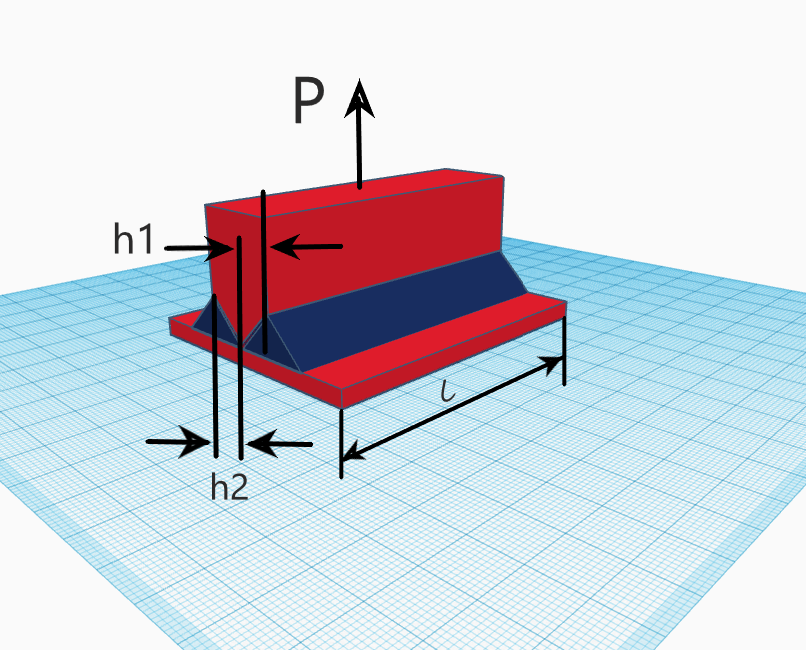The Force on Partial Fillet Axial Load Weld Calculator finds the stress created by an axial load partial penetration fillet weld (tee section). 
INSTRUCTIONS: Choose units and enter the following:
- (`P`) Total Applied Force
- (`h1`) Weld Thickness
- (`h2`) Weld Thickness
- (`l`) Length of Weld
Stress in Weld (`σ`): The calculator returns the answer in psi. However this can be automatically converted to compatible units via the pull-down menu.
The Math / Science
There are five basic types of welded joints: butt, lap, tee, corner and, edge joints.
Butt joints are formed when two plates are butted together. The connection is normally made with a full or partial penetration weld.
Lap joints are made when two members with flat surfaces overlap each other. The connection is normally made with fillet welds on the edges of the connected parts.
Tee joints have one plate element that "T"'s into another. The joint can be made with fillet, partial penetration, or full penetration welds.
Corner joints are a type of tee joint. They occur at the edges of two plates.
Edge joints join the edges of two plates laid together. The connection is made with partial penetration welds. 

To find the amount of stress, use the formula:
σ = P / [ (h1 + h2) ⋅ l ]
where:
- σ = stress in the weld
- P = total applied force
- l = length of the weld
- hn = thickness of the weld
Welding Calculators and Constants
- Bend Allowance Calculator
- Weight of Aluminum Square Bars
- Steel Wire Deposition Rate Calculator
- Welding Heat Input Calculator
- Groove Weld Potential Root Cracking Calculator
- Weight of Hot Rolled Steel Flats
- Modulus of Elasticity for Martensitic Stainless Steel
- Brinell Hardness of Gray Cast Iron
References
StructX (https://structx.com/welded_connections.html)
A Beginner's Guide to the Steel Construction Manual, 13th ed. (https://www.bgstructuralengineering.com/BGSCM13/Contents.htm)